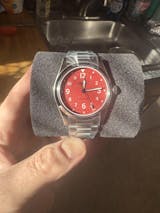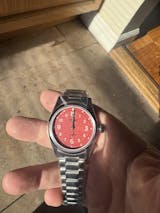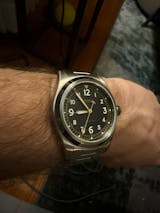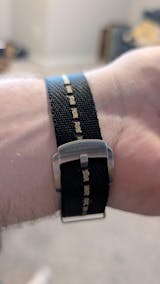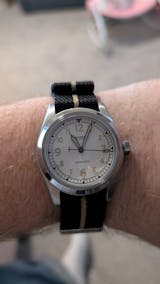Reinventing in Ruins: Cincinnati Mega Factories & City Beautiful

Cincinnati: Reinventing in the Ruins of Mega Factories

Cincinnati, Cleveland, Pittsburgh are Midwest cities that played a pivotal role in the early years of our Country producing goods, and machining the tools that produce the goods America sold around the globe. The mega factories that were built for this were large and beautiful, remnants of the past still stand as they transform into modern Cincinnati.
One of Henry Ford's original Model-T factories is down the street from where I sit right now; one of the first production lines.
A City of Makers
Cincinnati was a factory town. We made stuff. We worked in factories, went to the bar, went to church, and tended our homes raising children. Our Grandparents had tools, and I mean All of the tools. Cincinnatians that lived in the 1900's likely had more blacksmithing equipment in their basements than some small countries industrial output at that time.
LeBlond Tool and Die made the lathes that, sold to foreign countries, bored out the barrels on almost all of the guns in WW2 on all sides.
When we say Cincinnati is a City of Makers, We Mean Cincinnati made things from really small to Really Large. We didn't just make finished products, we literally made the tools and machines that made, well, everything!
If You Made Things - Make Things Beautiful
You could be sitting in your car in Cincinnati in line to get an oil change and a random building in front you, small and unassuming, yet having intricately designed brick, definitely old, from when people took time to make things beautiful, stares back at you.

What is that? A brick column entrance way with ornate brass lights on top - green with age and intelligent poise. Where did that come from? Next to a BP gas station parking lot and a Valvoline?
An architecturally beautiful clock tower in an outdoor shopping mall. What is that tower with it's amazing four side clock and beautiful inlayed tile doing there? The incredible tower that now has a BW3 logo on it.

The architecture of this outdoor shopping mall is gorgeous. We never see that anymore. What gives?


All of the pictures above are of what is today known as Rookwood Commons, an outdoor shopping mall on 596,000. SqFt that contains restaurants, shops, stores, including a Whole Foods and REI.
This entire site used to be one giant mega-factory; the
LeBlond Tool and Die factory.
The area shaded out below was all the LeBlond Tool & Die Factory.

The LeBlond Factory:
-
Background: The R.K. LeBlond Machine Tool Company, founded in 1887 by Richard K. LeBlond, was a significant player in Cincinnati's industrial scene. The factory produced high-quality machine tools and played a crucial role in the city's economic development.
-
Architectural Features: The LeBlond factory embodied the principles of the Factory Beautiful movement. It featured a well-designed, aesthetically pleasing building that integrated decorative elements with practical industrial architecture. Large windows allowed natural light to flood the workspace, creating a better environment for workers. The factory grounds were landscaped, providing a more pleasant setting both for employees and the surrounding community.
-
Legacy: The LeBlond factory not only contributed to the economic growth of Cincinnati but also set a standard for industrial architecture that balanced functionality with beauty. It showcased how factories could enhance the urban landscape and improve the quality of life for workers.
These factories were Massive, spanning many city blocks, because they were so massive and took up so much space in our Community, the owners, investors, and government who build cities, at the time thought that the factories, as well as any prominent building taking space in our community, should be beautiful.
...any prominent building taking space in our community, should be beautiful.
The Factory Beautiful Movement | City Beautiful Movement?
The Factory Beautiful movement was an architectural and cultural initiative that emerged in the late 19th and early 20th centuries, primarily in the United States. It was part of a broader trend known as the City Beautiful movement, which aimed to introduce beautification and monumental grandeur in American cities. The Factory Beautiful movement specifically focused on industrial buildings, advocating for the idea that factories could be both functional and aesthetically pleasing.

Key Features of the the Factory Beautiful Movement:
-
Aesthetic Design: Factories were designed with attention to architectural beauty, incorporating elements such as decorative facades, landscaped surroundings, and artistic details. This was a departure from the purely utilitarian approach that characterized earlier industrial buildings.
-
Humanizing Workspaces: The movement emphasized creating a more pleasant and humane environment for workers. This included ample natural light, better ventilation, and overall improved working conditions.
-
Community Integration: Factories were designed to be harmonious with their urban surroundings, often featuring park-like settings and contributing positively to the community's aesthetic and social environment.
Cincinnati and the Factory Beautiful Movement:
Cincinnati, known for its rich industrial history, was home to several notable examples of Factory Beautiful architecture. Among these, the LeBlond factory stands out.
Broader Impact:
The Factory Beautiful movement had a lasting influence on industrial architecture, setting a precedent for integrating aesthetic considerations into the design of functional buildings. It demonstrated that industrial efficiency and architectural beauty were not mutually exclusive and inspired subsequent generations of architects and industrialists to continue striving for more humane and visually appealing work environments.
Overall, the Factory Beautiful movement, exemplified by buildings like the LeBlond factory, represents a significant chapter in the history of architecture and industrial design, highlighting the importance of creating spaces that are both efficient and enriching for the people who use them.
A Few Examples of Factory / City Beautiful Movement
Dietrich Gruen Certainly believed in Factory Beautiful
Did you know Dietrich Gruen, founder of Gruen Watch Company, believed that anything and everything should be done, not just functionally precise and efficient, but beautiful as well. That if it is worth doing, you do it beautifully. That is why in 1913 he built Time Hill for his guild of watchmakers in a grand guild hall manner of Northern Germany and the Swiss Alps, where even on the outside tower that reaches into the air where no one would walk by, there are reliefs of the Gruen emblem.
Gruen Certainly Adhered to the Factory Beautiful, City Beautiful Movement. The only way Rick and Jordan are able to stand next to this tower emblem is bc after Gruen a new building was added. By crawling out a window and onto the roof we could stand next to what would have been up in the air when Time Hill was built.

Proctor & Gamble Headquarters Downtown, Cincinnati.
Whether by public regulation or an honest desire to adhere to City Beautiful Movement the Proctor & Gamble world headquarters in downtown, Cincinnati ads value to our city while still housing the office space of thousands of their most important employees. The building itself is beautiful and importantly the public park and promenade in front of their massive "Twin Towers" provides greenspace and a glorious Wisteria covered walking promenade, especially when the Wisteria blooms in the late Spring, early summer.

- Shillito
- Coca Cola Office Building
- Film works on Central Parkway
- Union Terminal
- City Hall
Cincinnati Mega Factories
The factories in Cincinnati that produced the machines that produced most of the goods in the World were not small. In fact, they were so large that when removed they are replaced with entire communities, giant shopping centers, or both.
R.K. LeBlond Machine Tool Company | Rookwood Commons
The R.K. LeBlond Machine Tool Company in Cincinnati, Ohio, ceased operations in 1989. Founded in 1887, the company was well-known for manufacturing metal-cutting lathes and other machinery. After closing, the facility saw various uses and has recently been considered for redevelopment into residential and commercial spaces.
Milacron | "Oakley Station"
The old Cincinnati Milacron factory, originally known as the Cincinnati Milling Machine Company, closed in 2003. The site has since been redeveloped into Oakley Station, a mixed-use development featuring residential, retail, and office space.
Oakley Station contains an AMC movie theater, a giant Kroger grocery store, many restaurants, new housing in condos and apartments. In the below map see the footprint the old giant Milacron factory once took up that is now mixed use residential space in Cincinnati.

United States Playing Card Company | Factory 52 in Norwood
If you ever look at the side of a pack of playing cards odds are it says "Made in Cincinnati, Ohio". For decades playing cards were designed, printed, cut, and boxed here in Cincinnati at the United States Playing Card Company.
Closed in 2009 when the company relocated to Northern Kentucky, the giant factory sat empty for a few years. Now, the entire area is a walkable family friendly place for Cincinnatians to communally gather known as Factory 52.
Factory 52's Efforts to Save Historic Architecture

At an expense to the builder the designer kept Cincinnati’s Maker heritage alive incorporating them into the new build. We are extremely grateful for this consideration and continuation of our past heritage, it's the architecture that makes our Midwest river city special and unique.

The United States Playing Card Company lunchroom was designed by "Cincinnati's architect" Samuel Hannaford, the architect who designed Music Hall! Factory 52 saved this architectural delight and turned into the communal beer and food hall aptly named the Gatherall.
The United States Playing Card Company lunchroom was designed by "Cincinnati's architect" Samuel Hannaford, the architect who designed Music Hall!
GM | Norwood Plaza
The General Motors assembly plant in Norwood, Ohio, closed in 1987. The plant had been a significant part of the local economy since it opened in 1923. Kroger put a large grocery store there anchoring a drive in shopping mall of tens of stores, restaurants, and other goods.
Driving around Norwood, Ohio you may realize the streets zig and zag, make odd turns, some streets are very short, some turn into unexpected dead ends. That is because the heart of Norwood is built on the remnants of the grounds of a giant car plant factory.
The Importance of Preservation
Saving parts, in not all, of the architectural designs when dated buildings seek new life is so very important to the future of Cincinnati. It is the architecture that people come to our midwestern city to see, it is the architecture that reminds us of who we are, and that wows people when they get here. It's our heritage on display when the old architecture is kept in play. And, as the City Beautiful Movement is dead, replaced by cheap is the way; we will never build these ornate structures again. If we do not preserve at least parts of them, we will never have them again. Structures like the Hoffman Building, currently planned to be demolished.
In so many cases in Cincinnati the architecture elements are left incorporated into the new builds wonderfully, like Factory 52, and LeBlond, for that we are extremely grateful to have those architectural components in the modern repurpose of buildings, and in the most important, still have nearly whole buildings intact like Union Terminal.
Save the Clock Tower!
Of course, Cincinnati Watch Company really appreciates restoration and the preservation of the clocks.
Factory 52 indeed saved the clock and clock tower, incorporating them beautifully into their modern new build; a move that provides soul and character to the new investment.
We Are Grateful
At an expense to the builder the designer kept Cincinnati’s Maker heritage alive incorporating them into the new build. We are grateful for this consideration and continuation of our Heritage, that which makes up the fabric of our community and powers our muscles, and the beating of our hearts.
Resources and Links
GM - Norwood Square - https://www.wvxu.org/local-news/2017-08-25/remembering-norwoods-gm-plant-30-years-later
LeBlond: https://en.wikipedia.org/wiki/R._K._LeBlond_Machine_Tool_Company
Model T Assembly Plant in Cincinnati: https://walnuthillsstories.org/stories/ford-model-t-assembly-plant/








